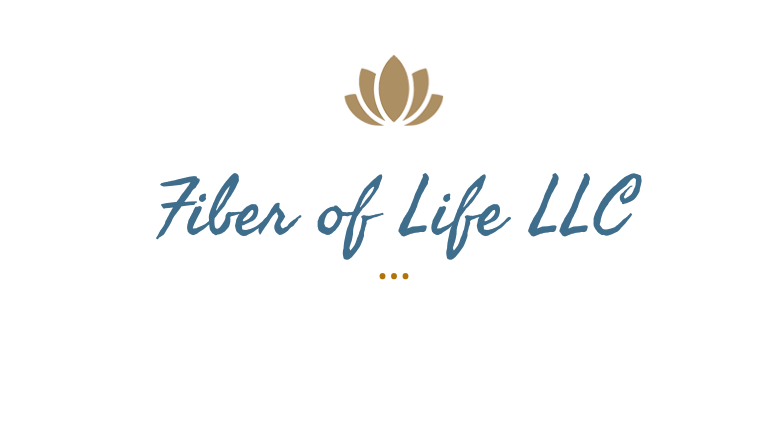
Fascia: The Key to Managing Chronic Pain
"When the Body Gets working appropriately, the force of Gravity can flow through, then spontaneously, the body heals itself"
Ida P. Rolf
When I began the latest leg of my journey with restorative movement, fascia was a somewhat new buzzword. I kind of understood the concept but it seemed a little abstract. I discovered quickly that the body awareness that Restorative Movement develops is an important part of understanding its role in chronic pain. The restorative techniques I have learned, are the best way to mobilize and release fascial restrictions and liberate the muscles and joints of the body.
As human beings we navigate the world defying the force of gravity in many ways. Ida Rolf, a pioneer in the field of fascia, was known to say”we are not therapists, gravity is the therapist.” Gravity has a major impact on our musculoskeletal system.
Gravity and Your Body:
Fascia is a web-like connective tissue that surrounds all of the muscles, bones, organs, and nerves in the body. It is also found in the skin, blood vessels, and lymphatic system. It is a dynamic tissue, meaning that it is constantly changing and adapting to the demands placed on it. Fascia is also highly elastic, meaning that it can stretch and return to its original shape.
When we move, it helps to transmit force throughout the body, allowing us to move efficiently and with power. It also helps to absorb shock and protect our joints. Gravity is the primary force that is pulling us towards the earth. Fascia helps to resist gravity and keep us upright. It also helps to circulate blood and lymph throughout the body.
There are a number of ways that the fascia system moves gravity through the body.
Springiness for Propulsion
One way is by acting as a spring. When we move, it stretches and then recoils. This helps to propel us forward or upward. Researchers have shown that fascia stores more kinetic energy than any other type of tissue.
A good example is the plantar fascia. When you step down, it stretches, storing energy. When you push off, it releases this energy, propelling you forward. This action is what gives you a spring in your step.
Tension for Support
Another way is by creating tension. When we move, the fascia creates tension in different parts of the body. This tension helps to support our joints and keep us balanced.
It also helps to move gravity by creating waves. When we move, it creates waves of tension and relaxation that travel throughout the body. These waves help to distribute our weight evenly and prevent us from falling over.
Here are some specific examples of how the fascia system moves gravity through the body:
- When walking, the fascia in your legs and feet helps to propel you forward.
- In lifting your arm, the fascia in your shoulder and arm helps to support the weight of your arm.
- While standing up from a chair, the fascia in your back and legs helps to lift your weight up.
- When you jump, the fascia in your legs and feet helps to absorb the shock of landing.it
How Fascia Can Cause Pain:
However, it can also cause pain. There are a number of ways that this can happen.
Restricted Fascia
One way is that fascia can become tight or restricted. This can happen due to injury, overuse, or lack of use. When fascia is tight or restricted, it can put pressure on the muscles, nerves, and other tissues in the body. This can cause pain.
There are many things that can damage fascia, including:
- Injury: A sudden or repetitive injury can damage fascia.
- Inflammation: Inflammation can cause fascia to become swollen and painful.
- Immobility: When you don’t move your body enough, fascia can become tight and restricted.
- Stress: Stress can also contribute to fascial tightness and pain.
- Auto-immune disorders: inflammation of the fascia is very common in auto-immune disorders.
Referred Pain
Finally, fascia can also refer pain to other parts of the body. This is because it is a continuous network of tissue that connects all parts of the body. When one area of the fascia is irritated, it can send pain signals to other areas of the body.
Here are some specific examples of how fascia can cause pain:
- Headaches: Tension in the fascia of the neck and head can cause headaches.
- Back pain: Tightness in the back.
- Shoulder pain: Inflammation in the should.
- Knee pain: Tightness in the knee.
- Foot pain: Inflammation in the foot.
Why You Should Care:
There are several reasons why it is important to get started as soon as possible to improve fascia health:
- Fascia is essential for good health. It plays a vital role in movement, stability, and balance. It also helps to protect our organs and tissues. When it is healthy, we are less likely to experience health problems.
- Fascia can become unhealthy over time. As we age, it can become dehydrated, stiff, and less elastic. This can lead to pain and injuries. It can also make it more difficult to move freely and perform everyday activities.
- Improving fascia health can have a number of benefits. When it is healthy, we are more likely to experience:
- Reduced pain and inflammation
- Improved range of motion and flexibility
- Better balance and coordination
- Reduced risk of injury
- Improved athletic performance
- Faster recovery from workouts
- Improved overall well-being
The earlier we start to improve the better. This is because it takes time and effort to reverse the effects of years of neglect. By starting early, we can prevent problems from developing and improve our overall health and well-being
Improving Your Health:
If you are interested in improving your fascia health, there are a few things you can do to get started:
- Talk to a physical therapist. They can help you assess your needs and develop a treatment plan.
- Restorative movement. Movement helps to keep fascia healthy and flexible. It takes longer to heal than muscle. It responds to slow, gentle movement.
- Stretch Everyday. Stretching improves circulation and reduces muscle soreness.
- Try myofascial release. Consider trying myofascial release therapy, massage therapy, acupuncture, or restorative movement.
- Get enough sleep. Sleep helps your body to heal and repair itself. Aim for 7-8 hours of sleep each night.
- Get regular massages. Massage releases tension and improves range of motion.
- Use self-massage. Self-massage releases tension and improves circulation. You can use your hands or a foam roller.
- Stay hydrated. Dehydration can make fascia stiff and less elastic. Drink plenty of water throughout the day to stay hydrated.
- Eat a healthy diet. A healthy diet provides your body with the nutrients it needs to produce and maintain health. Eat plenty of fruits, vegetables, and whole grains.
By following these tips, you can help to keep your fascia system healthy and functioning at its best.
Conclusion:
The fascia system is an essential part of the human body. It helps us to move efficiently, with power, and with balance. It also helps to protect our joints and keep us upright. If you are experiencing pain, stiffness, or other problems, you may want to consider working with a qualified healthcare professional. They can help you to develop a personalized plan to improve your health and reduce your pain. By uncovering and resolving our body’s structural imbalances, we lay the foundation for long-lasting relief and a healthier, pain-free life.
For more information, check out our courses and together, armed with self-awareness and professional guidance, we can begin to chart your journey. Our team is committed to your well-being. Remember, the power to relieve chronic pain lies within your hands – or, more precisely, within your body’s fascial system.
Pam

As the chill of winter settles in, do you find yourself pushing harder, ignoring your body’s signals to slow down?

Let’s talk dreams – those visions you shelved while you were climbing career ladders or pushing boundaries in male-dominated industries

Picture yourself holding a brush, poised to redefine the very essence of your life’s next great work: retirement.


One Response